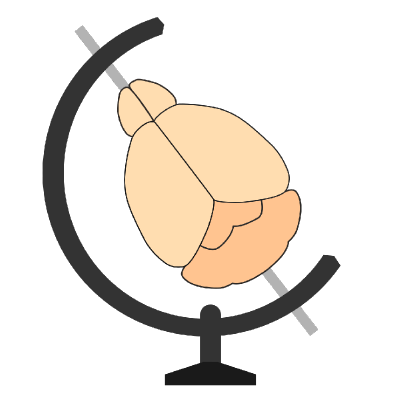BrainGlobe is being restructured, version 1 is on it’s way!#
BrainGlobe provides and maintains a number of open-source tools, each of which are provided as Python-based software packages. A number of these tools also come with a graphical user-interface provided by a napari plugin that can be installed on top of the Python package. Whilst there is an advantage to the modularity provided by maintaining separate tools, the same modularity can present challenges and unnecessary difficulties when running an analysis that relies on multiple BrainGlobe tools. Particular pinch points include:
Needing to manually install each tool (and its napari plugin in some cases) that needs to be used one-at-a-time.
Propagation of legacy naming conventions, as tools have evolved and their purpose has been redefined.
Complex dependency trees, further complicated by optional dependencies.
To address these issues, we are pleased to announce that development of “BrainGlobe version 1” is underway. The key features of this “version 1” will be:
Allowing for all tools to be installed in a single command,
pip install brainglobe.A reorganisation of the functionality offered by some tools (notably
cellfinderandbrainreg).To provide a stable release of all existing BrainGlobe tools that can be found in a single place.
The individual tools (and the packages that provide them) will be remaining separate, so users can continue to manage and install individual tools if they so choose.
What is changing?#
One of our priorities with version 1 is that users should have to change as little as possible when they update. Whilst the majority of changes are happening “under the hood”, the way users interact with them through napari or the package API will change minimally and should be limited to the renaming certain tools or functions. However we will be releasing changelogs for the individual tools as they are updated, as well as a final changelog with a complete listing of what tools have moved/changed and where to find them or their replacement.
Changes will be happening in a modular fashion, before the all-in-one brainglobe package is then released at the end.
This means that tools like brainreg, then cellfinder, etc will receive separate version updates as they are ready.
There should be no ill affects from updating the tools as they are released, however once the all-in-one brainglobe package is ready we recommend you make a clean install anyway, just so that there’s no funny business.
Under the hood?#
Under-the-hood, we are taking this opportunity to create a stable version of each of our tools, as well as perform some much needed housekeeping on how we organise the tools themselves.
This includes merging napari plugins with their corresponding “backend” tool; so to use brainreg with napari, users won’t need to install brainreg and then also install brainreg-napari, for example.
It also includes a renaming of a few tools that have since grown out of their original purpose; the cellfinder tool in particular will cease to exist, but the functionality will be preserved somewhere else in BrainGlobe.
Finally, this will also simplify the number of inter-dependencies that we need to manage between our tools, and prevents issues surrounding modular installations from affecting users.
We are not removing the option of manual installation of individual tools from the users that want to do this, however at the same time we are taking away this concern from users who want to jump right into using BrainGlobe’s features without worrying if they have the right tool installed or setup correctly.
How can I stay updated?#
The blog will be updated as the modular updates progress, as well as with the final announcement when everything is ready. You can also join us on Zulip and head over to the development stream to see live updates as development progresses.
Appendix: a note on cellfinder#
The tool currently known as cellfinder; which provides a command line workflow for performing whole-brain cell detection, registration, and analysis, will be undergoing a slightly more significant restructuring than the other tools.
The functionality (and workflow) that this tool provides will be preserved and moved to another package.
This change allows us to better distinguish between the workflow that the tool provides, and the “backend” Python code that the workflow depends on.
Making this change also allows the the packages cellfinder-core and cellfinder-napari (which contain the aforementioned Python code that cellfinder depended on and takes its name from) to take up the name cellfinder, which is helpful organisationally for us as developers.
Beyond the change in name, users will not have to worry about the internal changes that are occurring to the cellfinder package, as one of the features of “BrainGlobe version 1” will be to provide a one-line install that takes care of this for them.
As mentioned previously, a complete list of changes and a reference for finding tools that have moved will be published as tools are updated.
